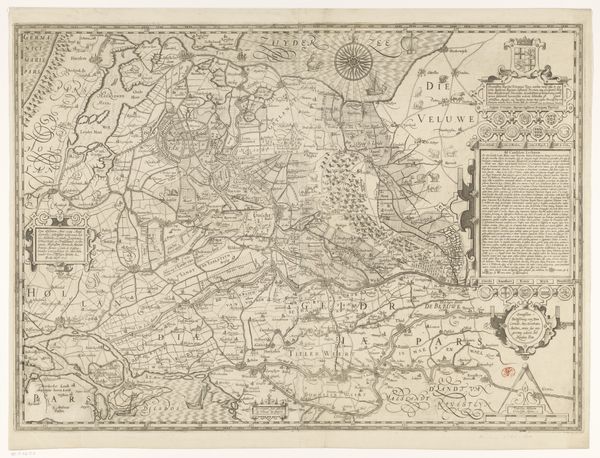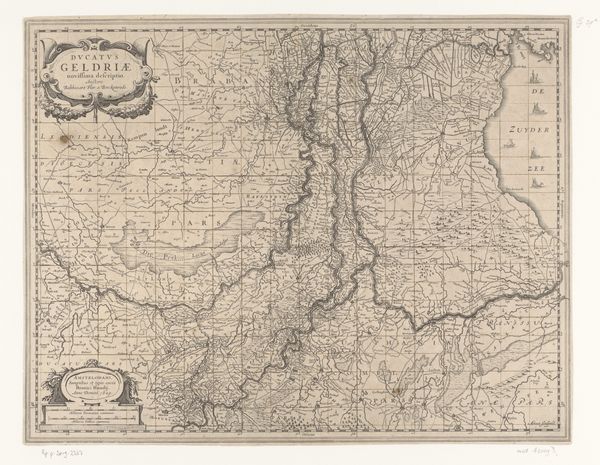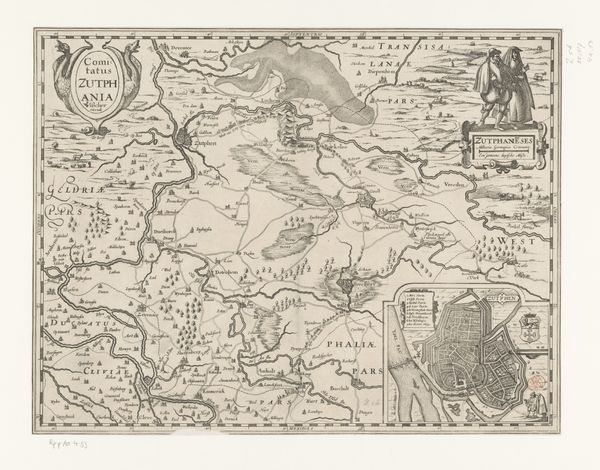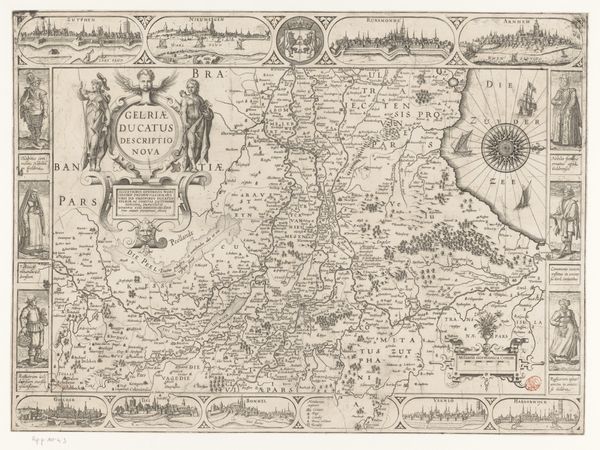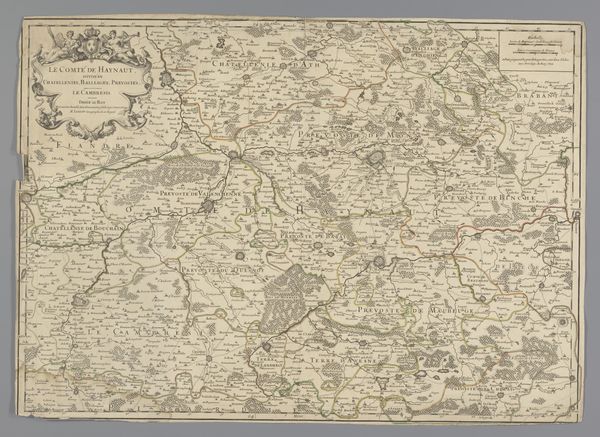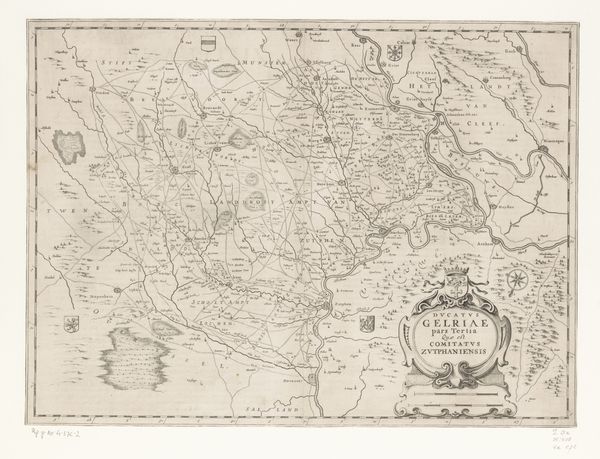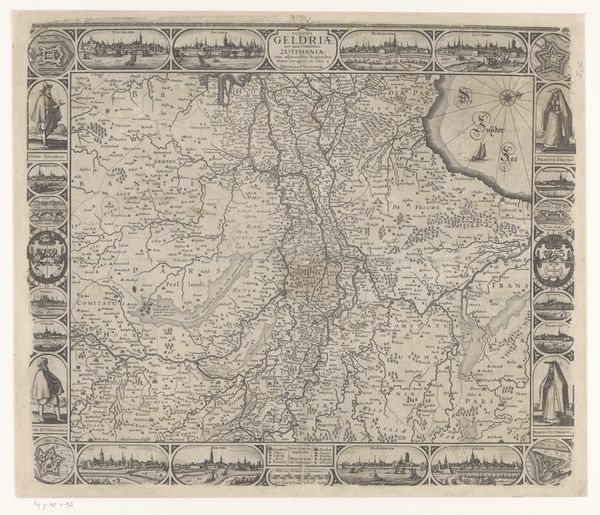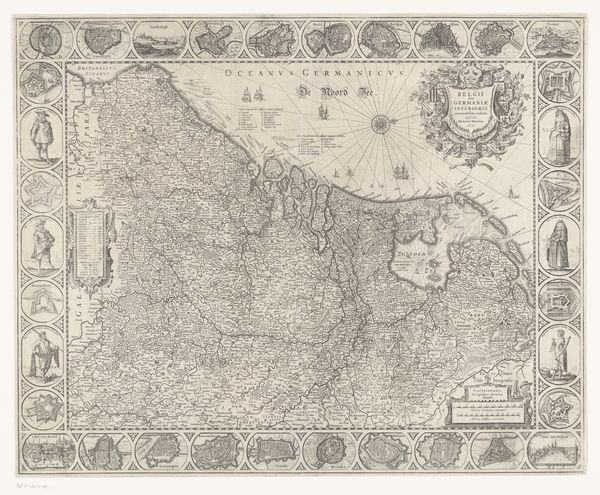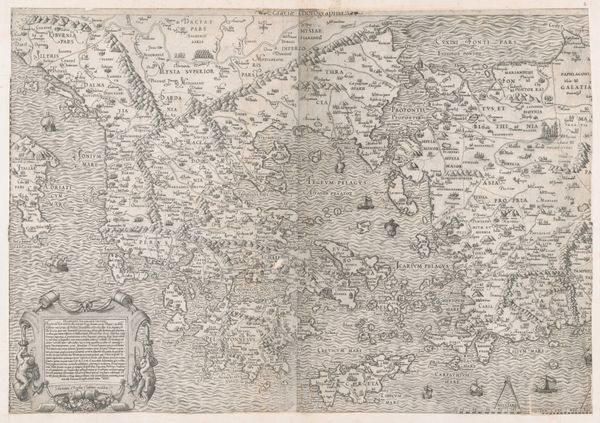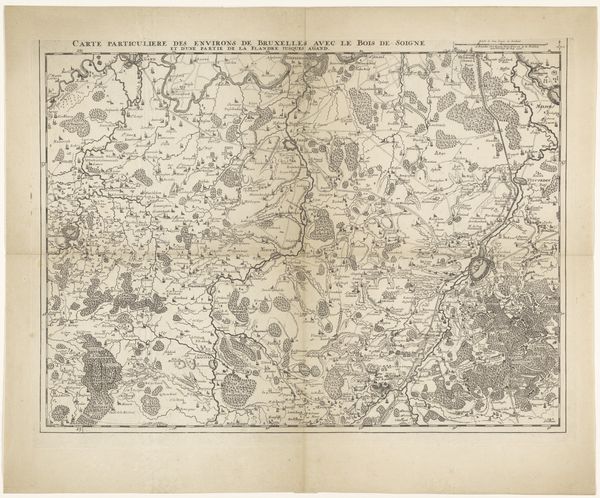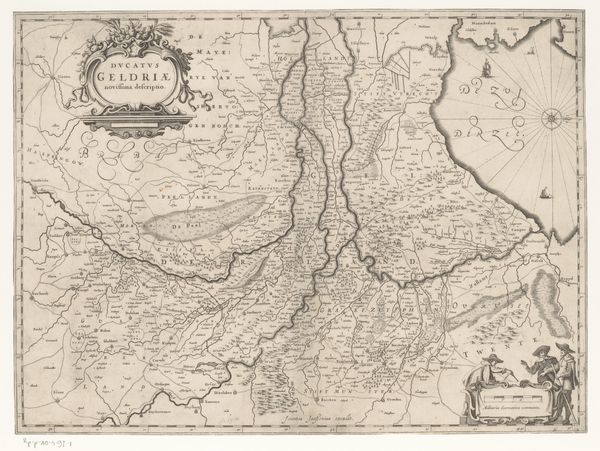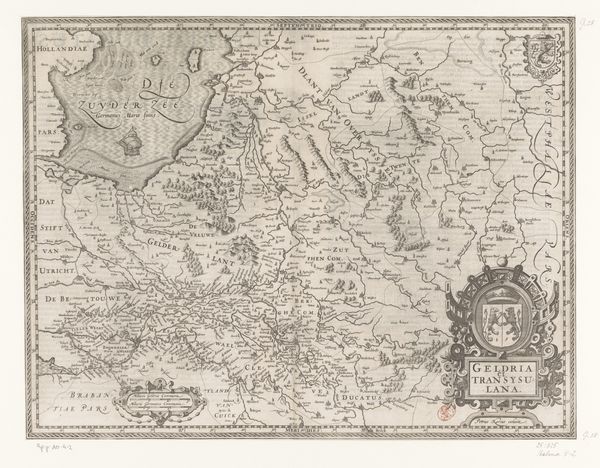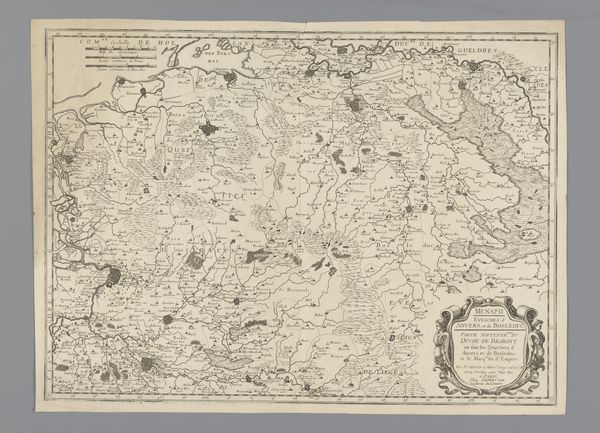
graphic-art, print, engraving
#
graphic-art
#
dutch-golden-age
# print
#
cityscape
#
history-painting
#
engraving
Dimensions: height 463 mm, width 568 mm
Copyright: Rijks Museum: Open Domain
Curator: What immediately strikes me about this print is the sheer density of information, like a spiderweb of settlements and borders, almost obscuring the land itself. Editor: I see what you mean; at first, it’s a maze, a feeling of getting lost in the details, but then my eyes wander and there is the suggestion of a story here. Can you elaborate? Curator: I’d be glad to. We're looking at "Kaart van Brabant," or "Map of Brabant," an engraving made in 1622 by Abraham Goos. Brabant was a significant region, historically part of the Low Countries, now divided between the Netherlands and Belgium. This map, published during the Dutch Golden Age, offers us more than just geographical data. It’s a cultural and political artifact. The map’s elaborate presentation, framed by images of cityscapes and social figures, hints at the power and complexities of the region during that period. Editor: So, not just "here are the roads," but "here are the people, the cities, and what we think is important." And look at the different figures framing the left and right sides of the map: a nobleman, a merchant, someone from the fields, each labeled in Latin. Curator: Precisely. These figures symbolize the different layers of society within Brabant. Maps, particularly at this time, were about power, knowledge, and claiming territories—both physically and ideologically. What does the imagery tell us about this agenda? Editor: Ah! You almost make me want to return to a simpler time of ink and paper. A digital map can point me anywhere instantly but carries very little weight as a beautiful document; you lose that tangible connection to exploration and to claiming and recording a part of the world for future discovery. Curator: Indeed. By framing geographical information within a broader context of status, profession, and landscape, Goos is offering not just a picture of space but a comprehensive portrait of a place and a culture. What resonates most with you about this portrait? Editor: It’s that sense of history held in a single object, like a time capsule etched in copper, with both the science and the social layers depicted right beside each other, as a holistic vision, to be preserved. It serves as an early assertion of data visualization in the cultural landscape of its day. Curator: I would certainly agree, what an enlightening conclusion.
Comments
No comments
Be the first to comment and join the conversation on the ultimate creative platform.
